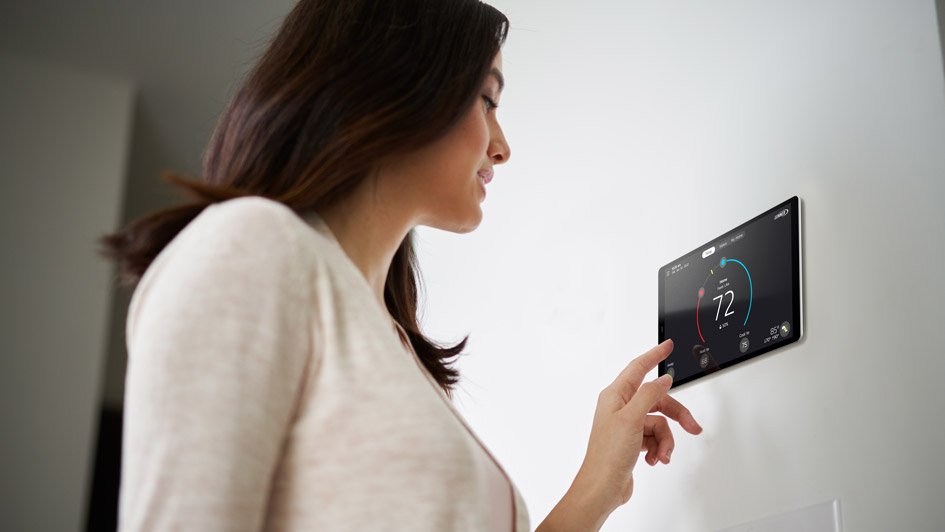
Once the weather starts to cool off, you may be wondering about how you’ll make the most of your heating and cooling. After all, HVAC bills routinely make up a large chunk of your monthly electric bill. To figure out new ways to save, some owners look closer at their thermostat. Is there a setting they should use to boost efficiency?
The bulk of thermostats include both a ‘Fan’ or ‘Fan On’ setting. But if the fan is on during a normal cycle, what can the fan setting provide for your HVAC system? This guide can help. We’ll share what exactly the fan setting is and whether you can use it to reduce costs in the summer or winter.
My Thermostat Has a Fan Setting?
For most thermostats, the fan setting indicates that the HVAC blower fan stays on. A few furnaces can operate at a low level with this setting, but in general heating or cooling isn’t being made. The ‘Auto’ setting, in contrast, will start the fan during a heating or cooling cycle and switch it off once the cycle is finished.
There are advantages and disadvantages to trying the fan setting on your thermostat, and what's ideal {will|can|should]] depend on your personal comfort requirements.
Advantages to utilizing the Fan/On setting:
- You can keep the temperature in every room more consistent by allowing the fan to keep running.
- Indoor air quality will be highest because constant airflow will keep forcing airborne particles into the air filter.
- A smaller amount of start-stop cycles for the blower fan helps lengthen its life span. As the air handler is often connected to the furnace, this means you might avoid needing furnace repair.
Drawbacks to utilizing the Fan/On setting:
- A constant fan can add to your energy costs somewhat.
- Continuous airflow may clog your air filter in a shorter amount of time, increasing the frequency you will want to replace it.
{Choosing Between|Should My Thermostat Be on|Which Setting for My Thermostat? Fan or Auto in Each Season
Through the summer, warm air may linger in unfinished spaces like the attic or an attached garage. If you use the fan setting, your HVAC system may pull this warm air into the rest of your home, forcing the HVAC system to work harder to preserve the desired temperature. In serious heat, this may lead to needing AC repair more regularly as wear and tear grows.
The opposite can occur over the winter. Cooler spaces like a basement will hold onto cooler air, which will eventually make its way into the rest of your home. Leaving the fan running may pump more cold air upward, increasing the amount of heating you need to stay warm.
If you’re still trying to decide if you should switch to the fan/on setting, keep in mind that every home and family’s comfort needs will vary. Leaving the HVAC system’s fan on could be ideal for you if:
Someone in your household has allergies. Allergies and similar respiratory conditions can be stressful on the family. Leaving the fan on can help to increase indoor air quality, helping your family breathe easier.
Your home has hot and cold spots. Lots of homes deal with persistent hot and cold spots that quickly return to a temperature different from the rest of the house. The fan setting can help minimize these changes by constantly refreshing each room’s airflow.






